This document provides an overview of functional behavioural assessment (FBA). It discusses that FBA aims to understand the context and function of a child's behavior by collecting data on antecedents, behaviors, and consequences. The goal is to develop a hypothesis and intervention to increase positive behaviors and reduce negative ones. The document outlines the stages of FBA, including identifying problems, gathering information, determining functions, developing a plan, implementation, and evaluation. It also discusses considerations around FBA such as collecting information types, theoretical basis in behaviorism and ecological systems theory, and pros and cons.

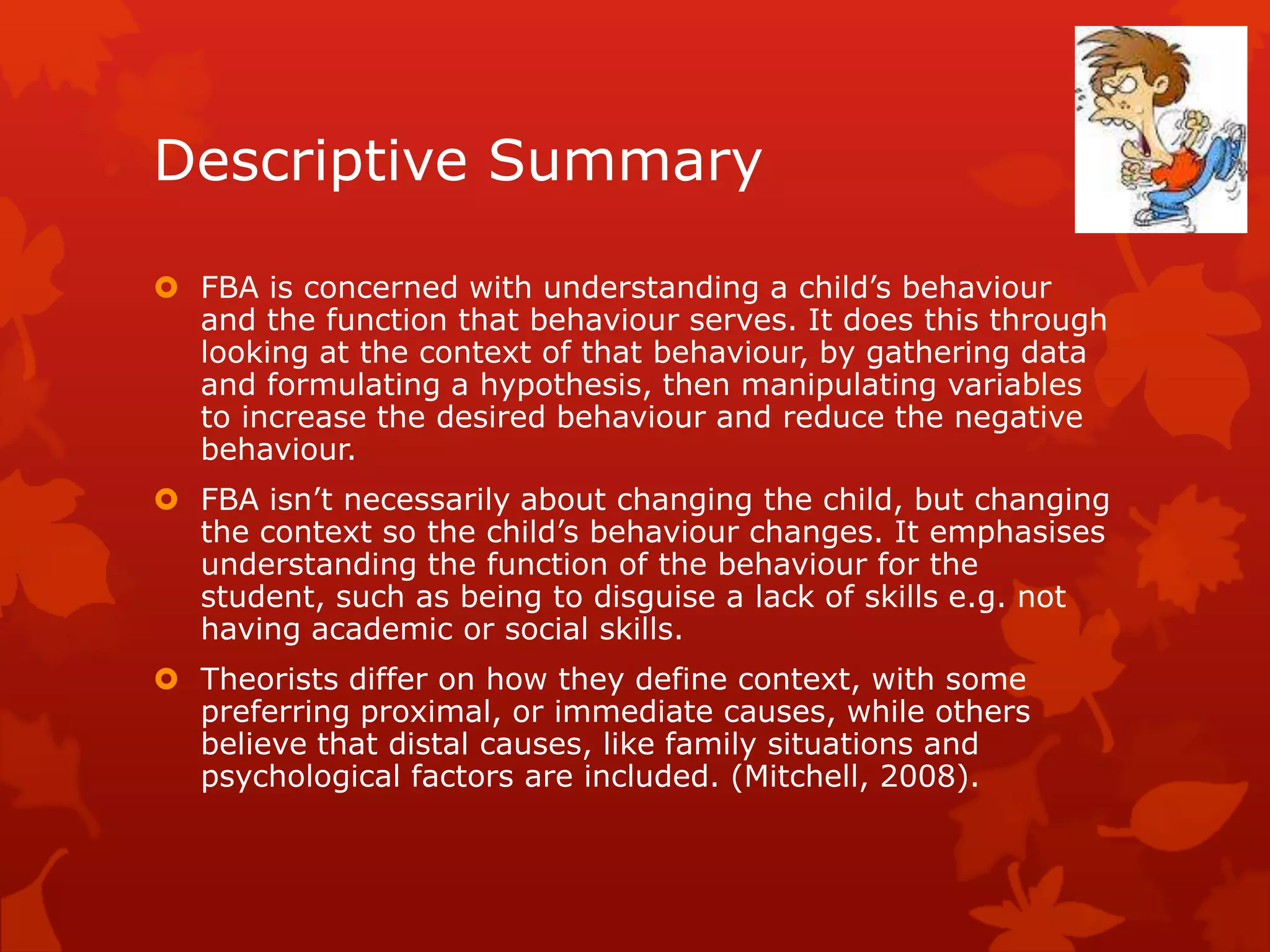

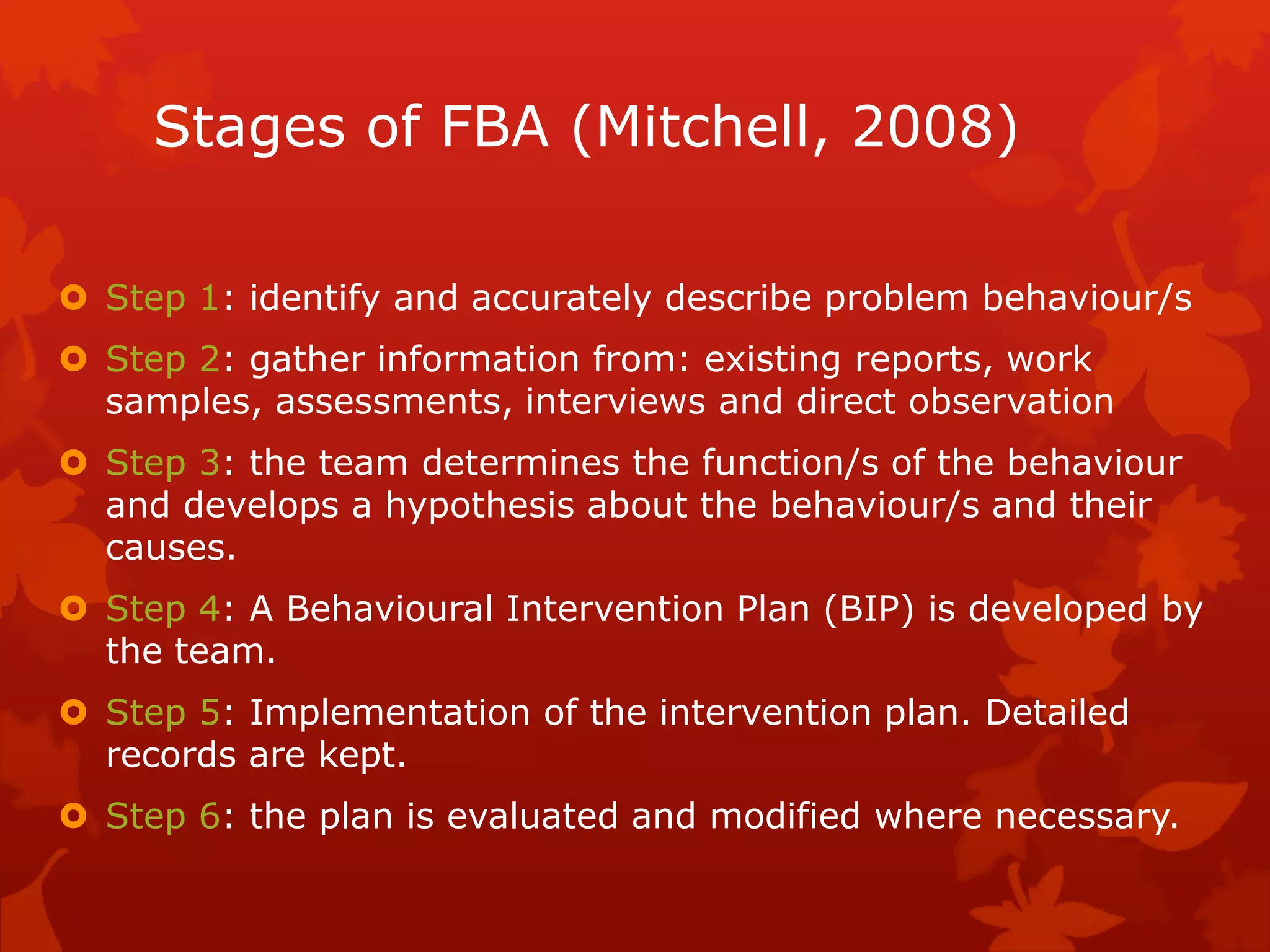
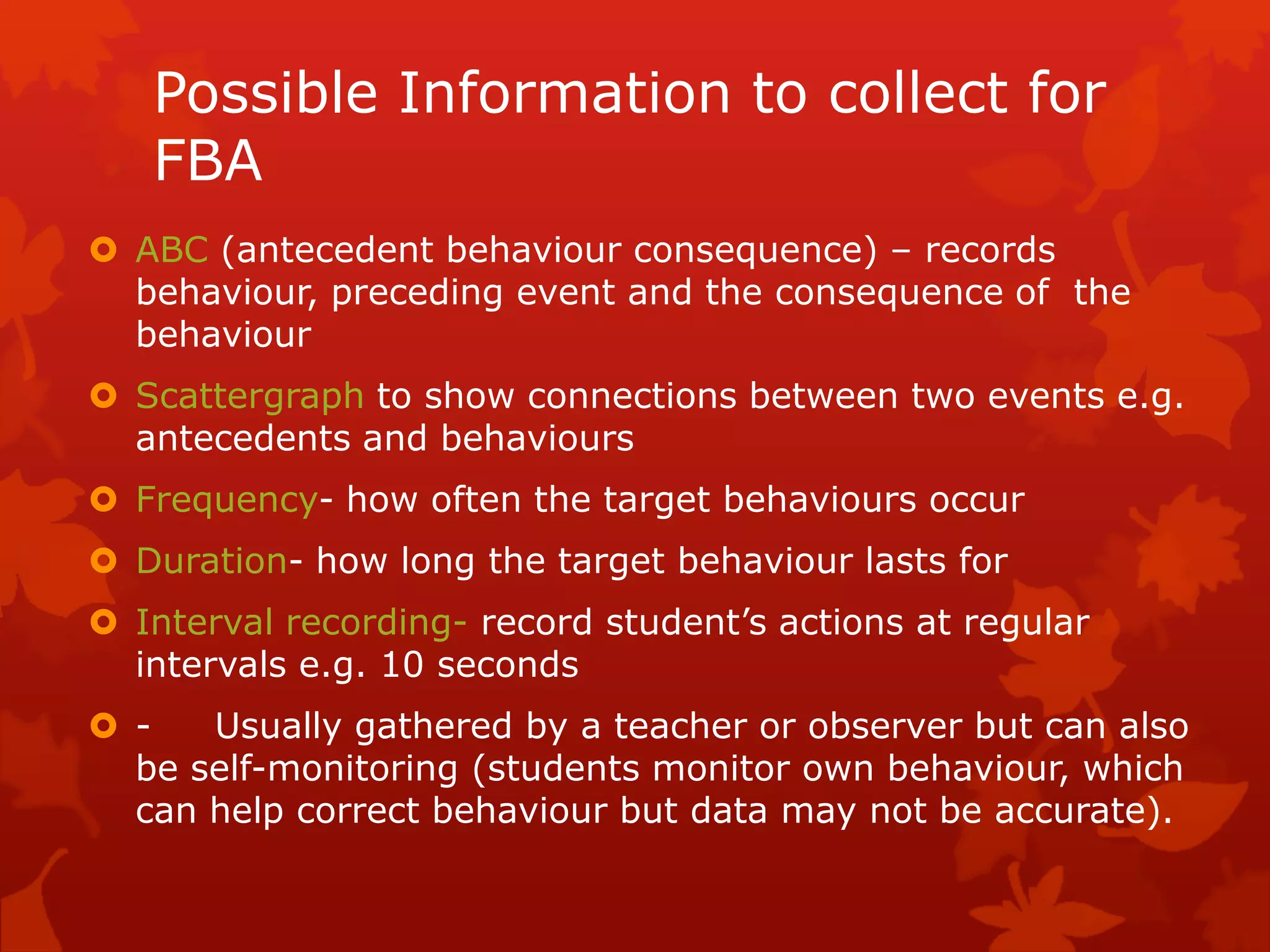
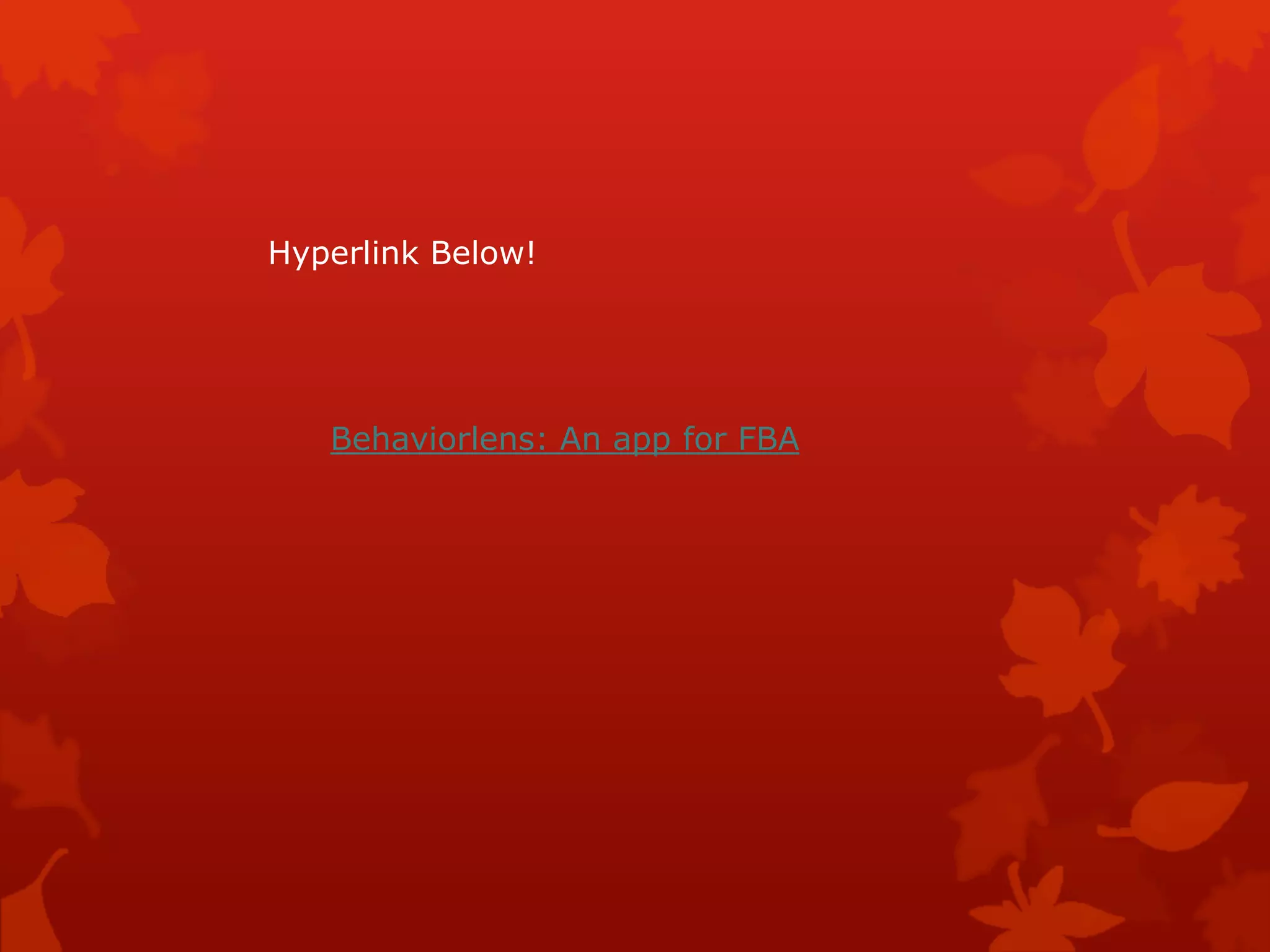
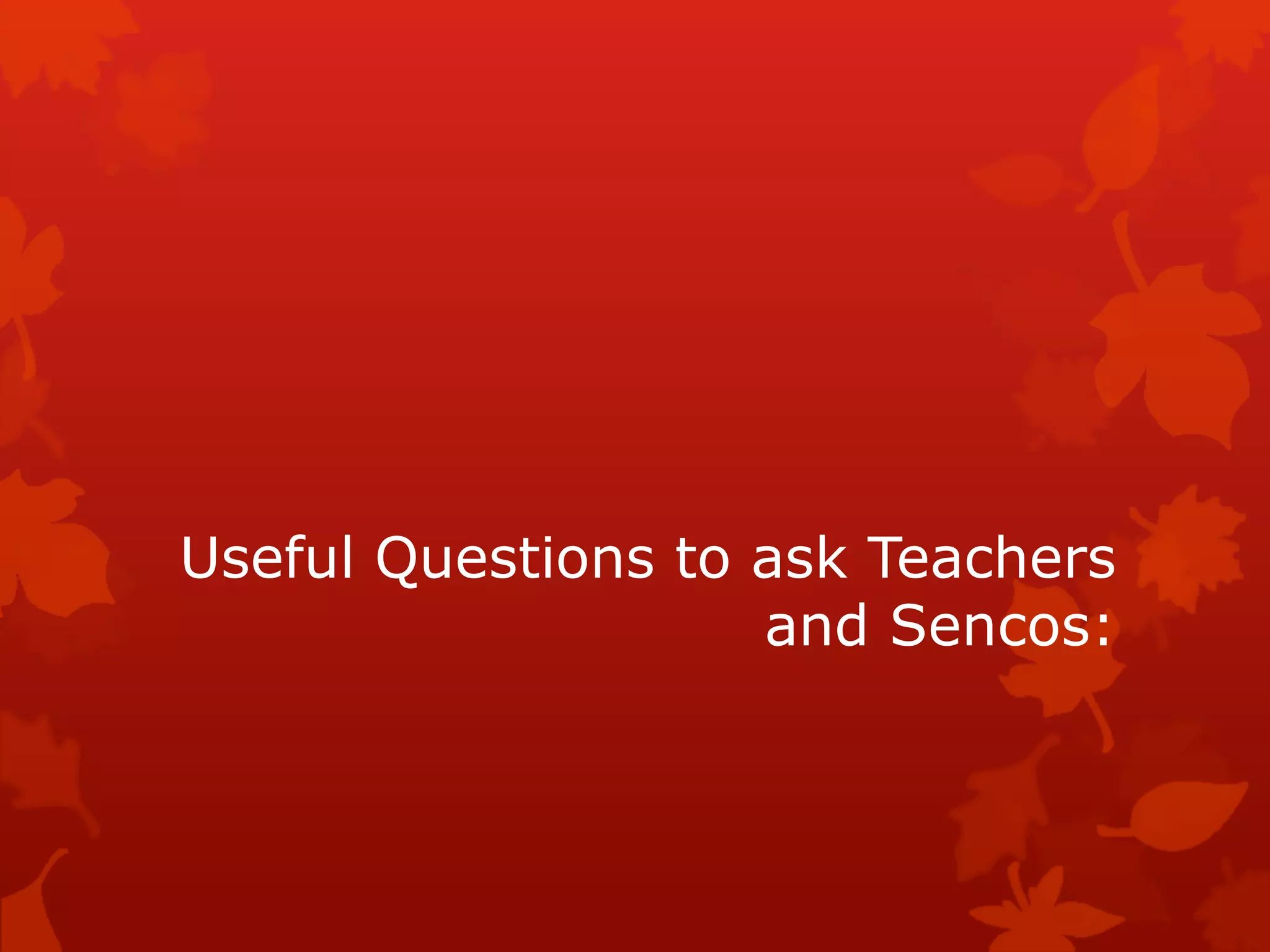

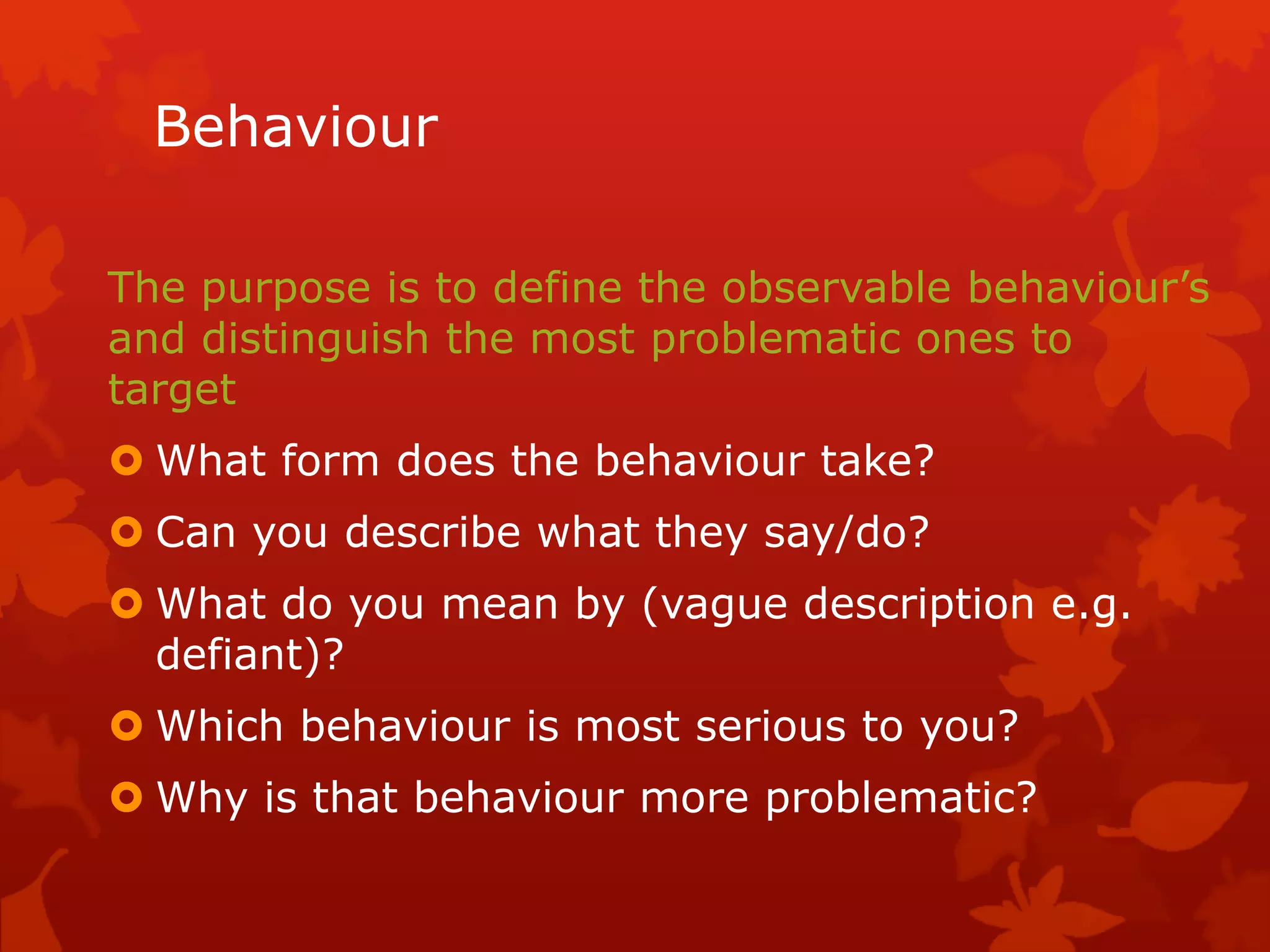
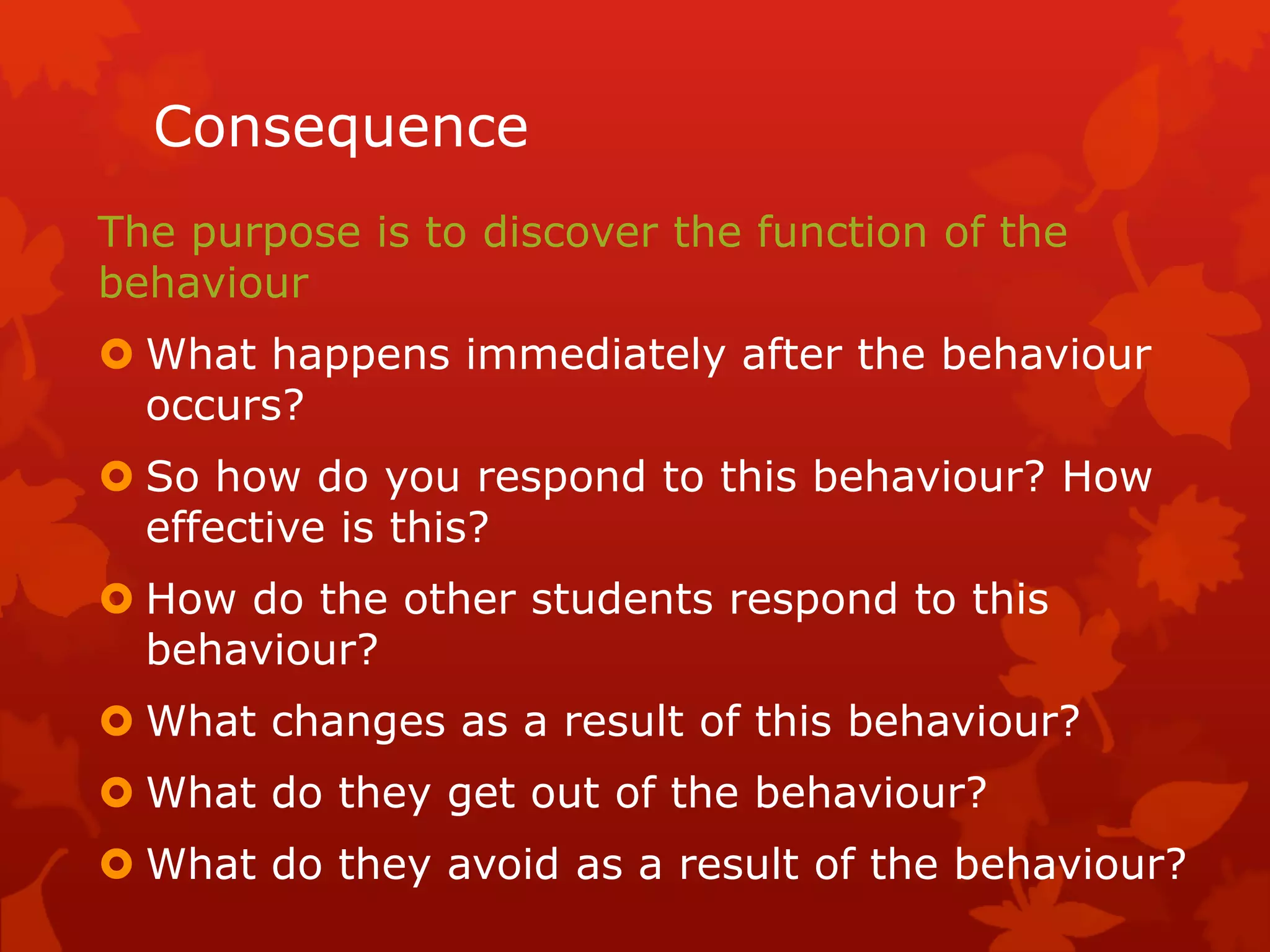
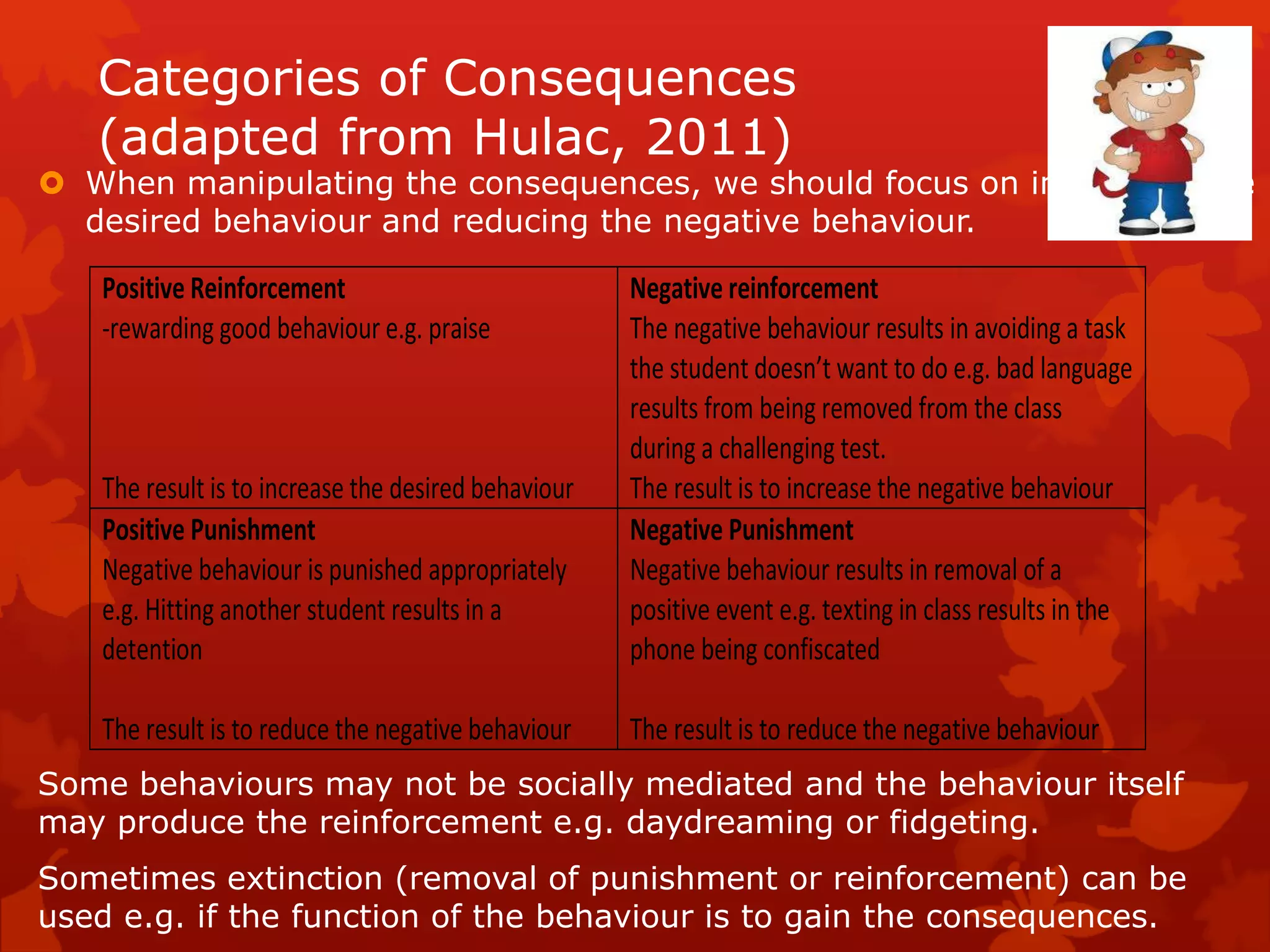
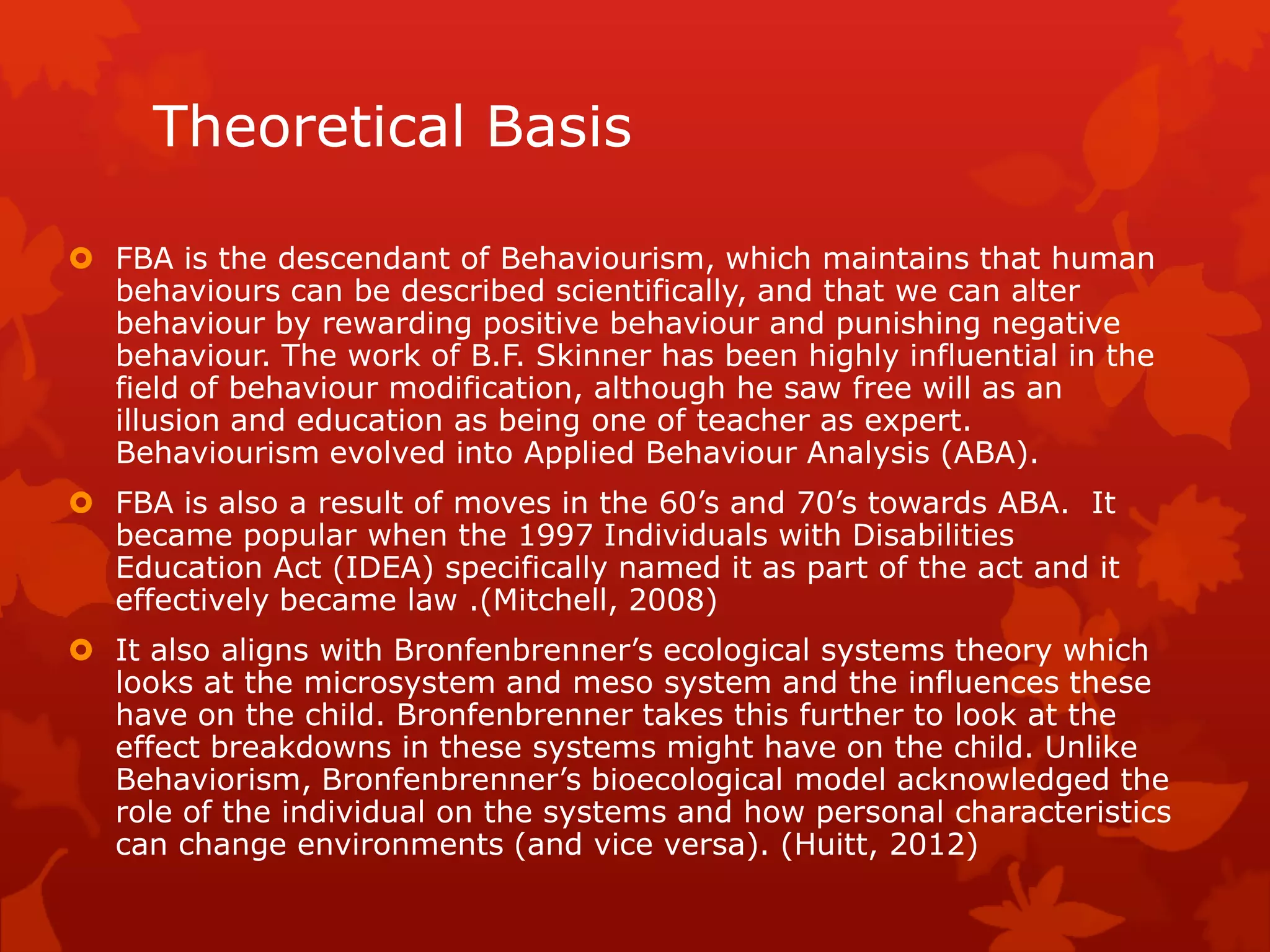
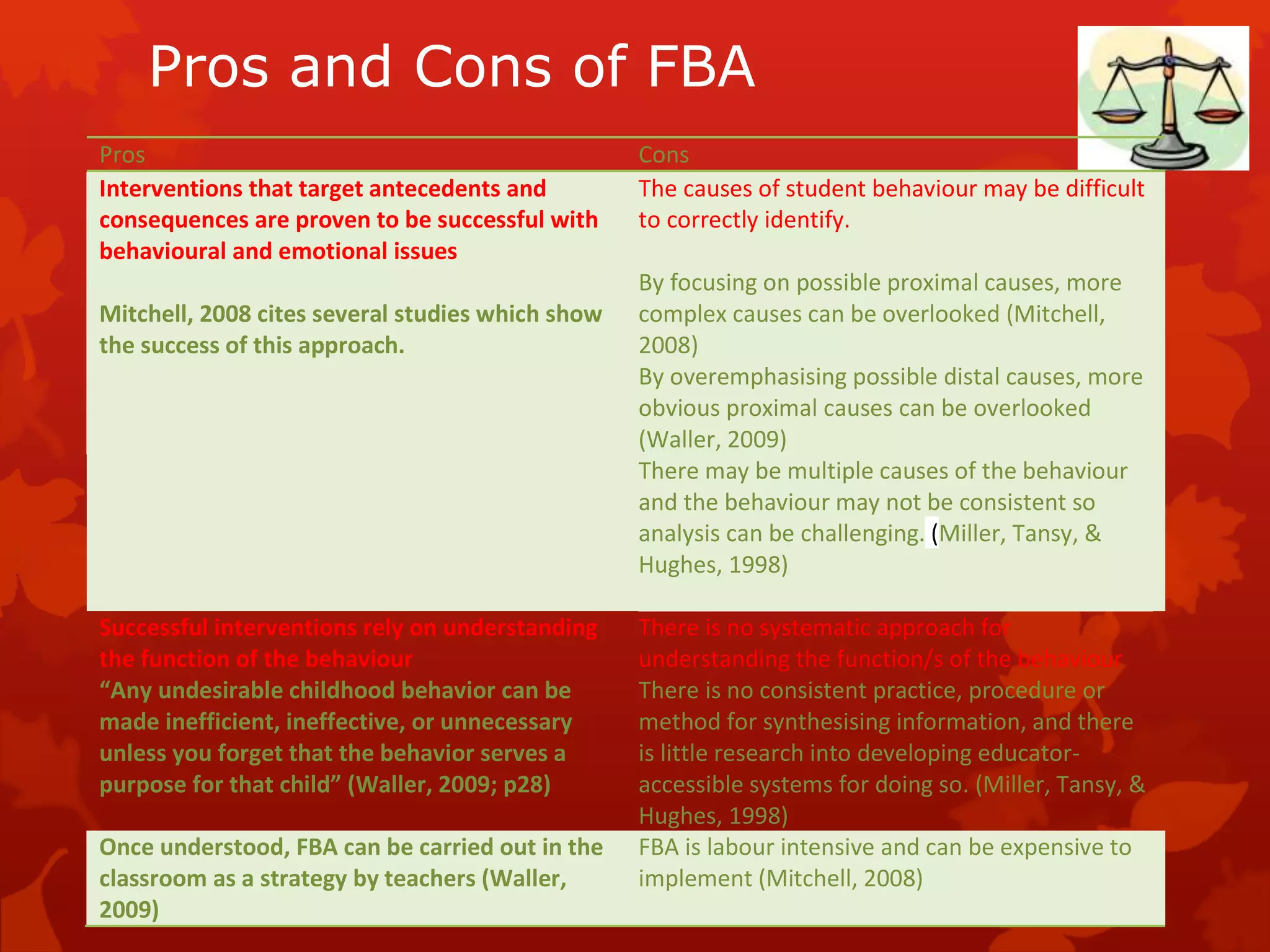
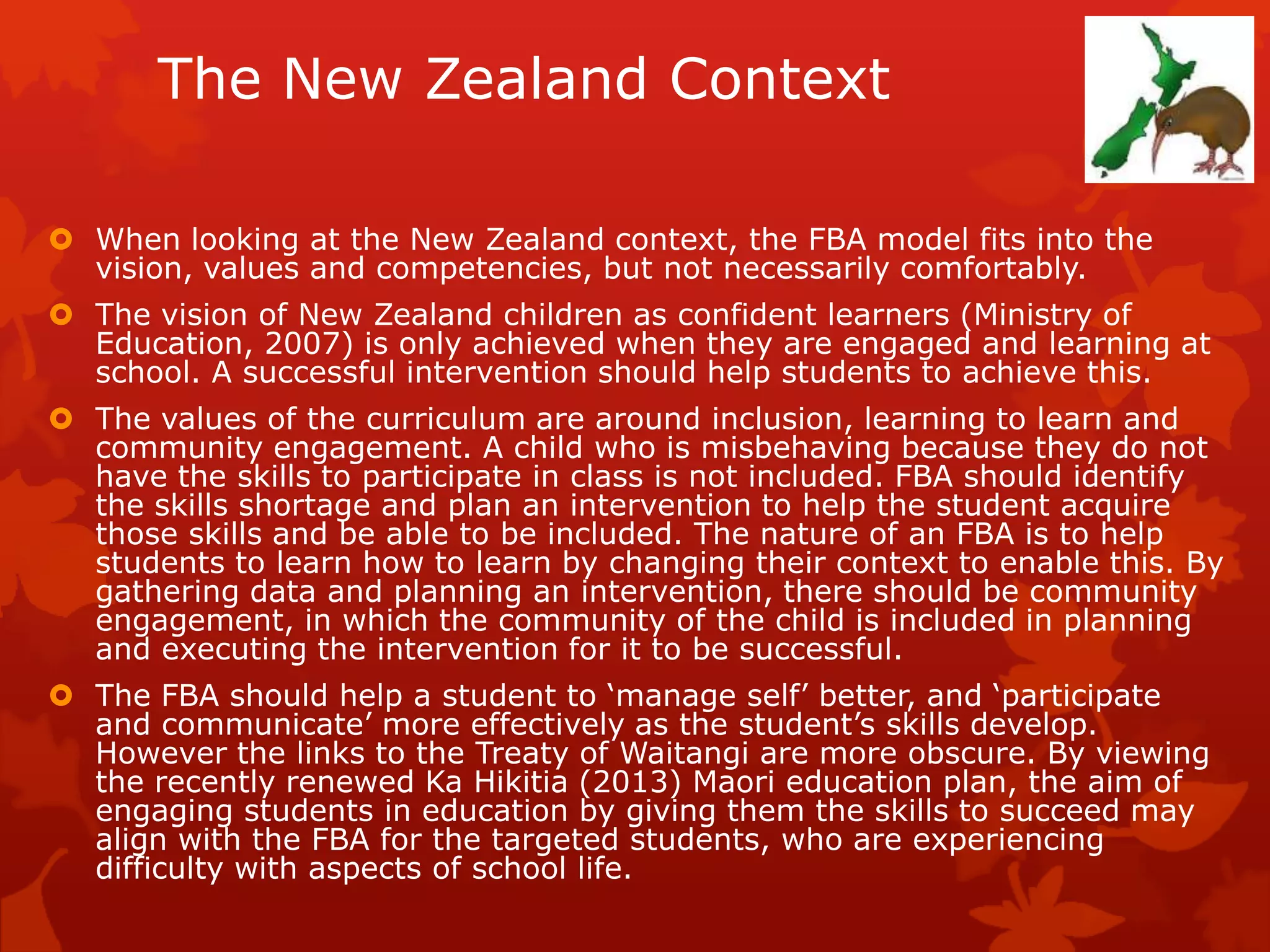
![References
Cipani, E. (2011). Decoding challenging classroom behaviors: What every teacher
and paraeducator should know!. Springfield, Ill: Charles C Thomas.
Gimpel, P. G., Ervin, G., Daly, R. A., Edward, K., & Merrell, K. W. (2010). Practical
handbook of school psychology: Effective practices for the 21st century. New York:
Guilford Press.
Hulac, D. M. (2011). Behavioral interventions in schools: A response-to-intervention
guidebook. New York: Brunner-Routledge.
Huitt, W. (2012) A Systems Approach to the Study of Human Behavior. Educational
Psychology Interactive. Valdosta, GA: Valdosta State University. Retrieved [date]
from http://www.edpsycinteractive.org/materials/sysmdlo.html
Miller, J. A., Tansy, M., & Hughes, T. L. (1998). Functional behavioral assessment:
The link between problem behavior and effective intervention in schools. Current
Issues in Education [On-line, 1(5). Retrieved from
http://cie.ed.asu.edu/volume1/number5/
Ministry of Education (2013). Ka Hikitia: Accelerating Success 2013-2017, retrieved
from
http://www.minedu.govt.nz/theministry/policyandstrategy/~/media/MinEdu/Files/T
heMinistry/KaHikitia/KaHikitiaAcceleratingSuccessEnglish.pdf
Ministry of Education (2007). The New Zealand Curriculum. Wellington: Learning
Media
Mitchell, D. R. (2008). What really works in special and inclusive education: Using
evidence-based teaching strategies. London: Routledge.
Waller, R. J. (2009). The teacher's concise guide to functional behavioral
assessment. Thousand Oaks, Calif: Corwin Press.](https://image.slidesharecdn.com/functionalbehaviouralassessment-131012012851-phpapp01/75/Functional-behavioural-assessment-15-2048.jpg)